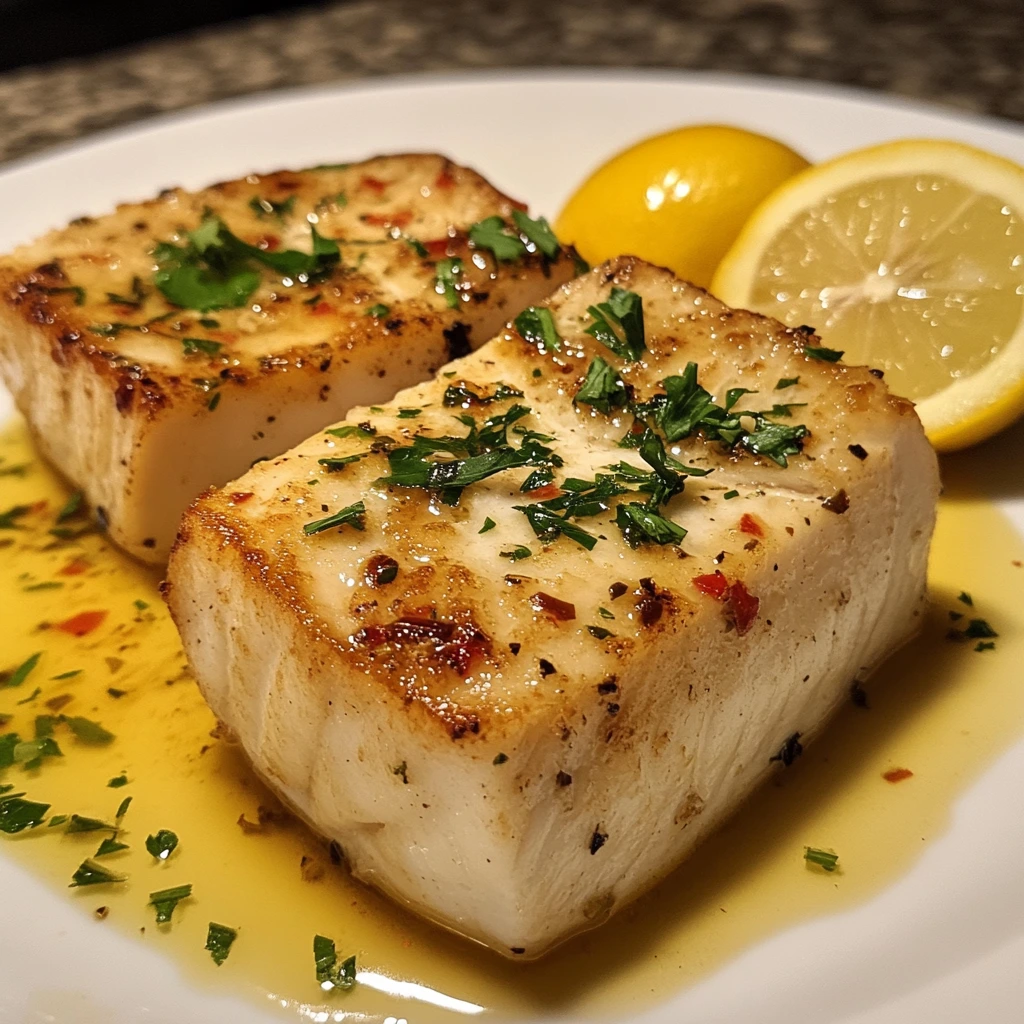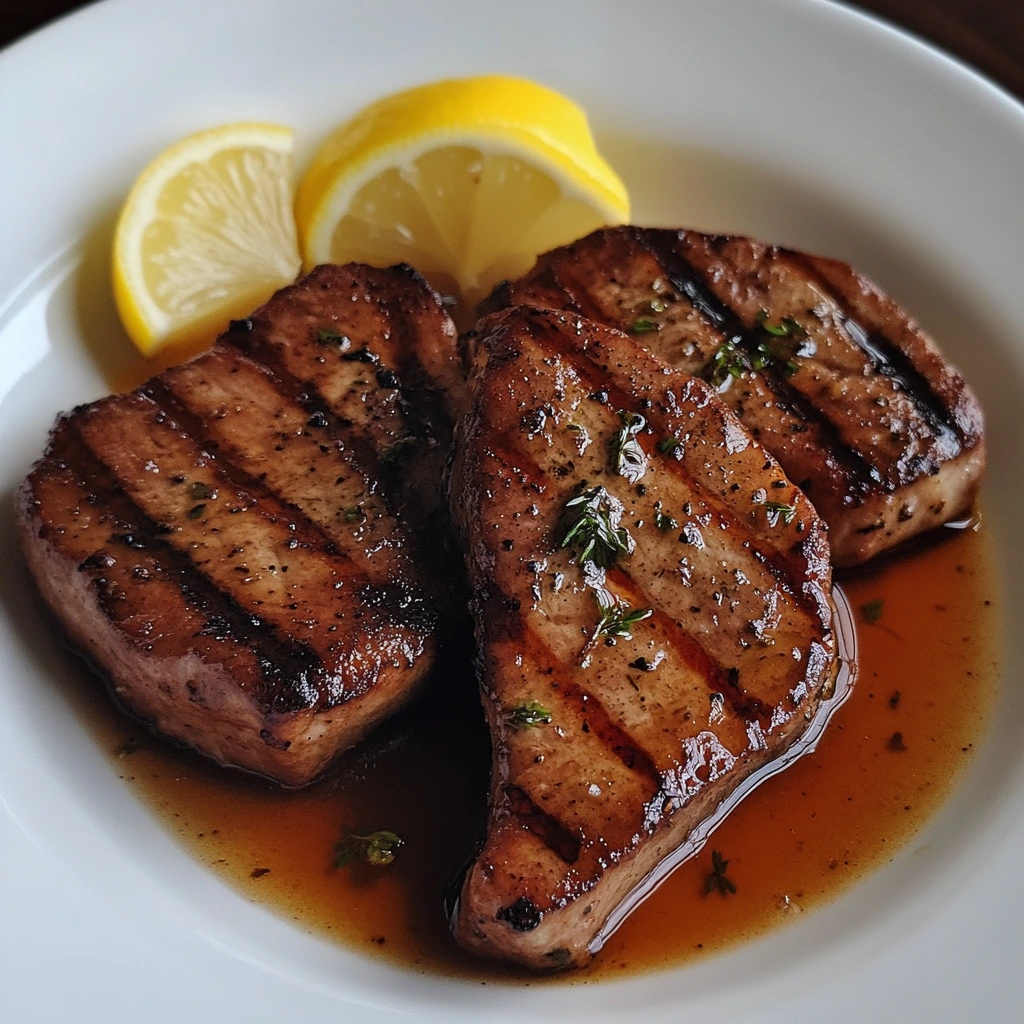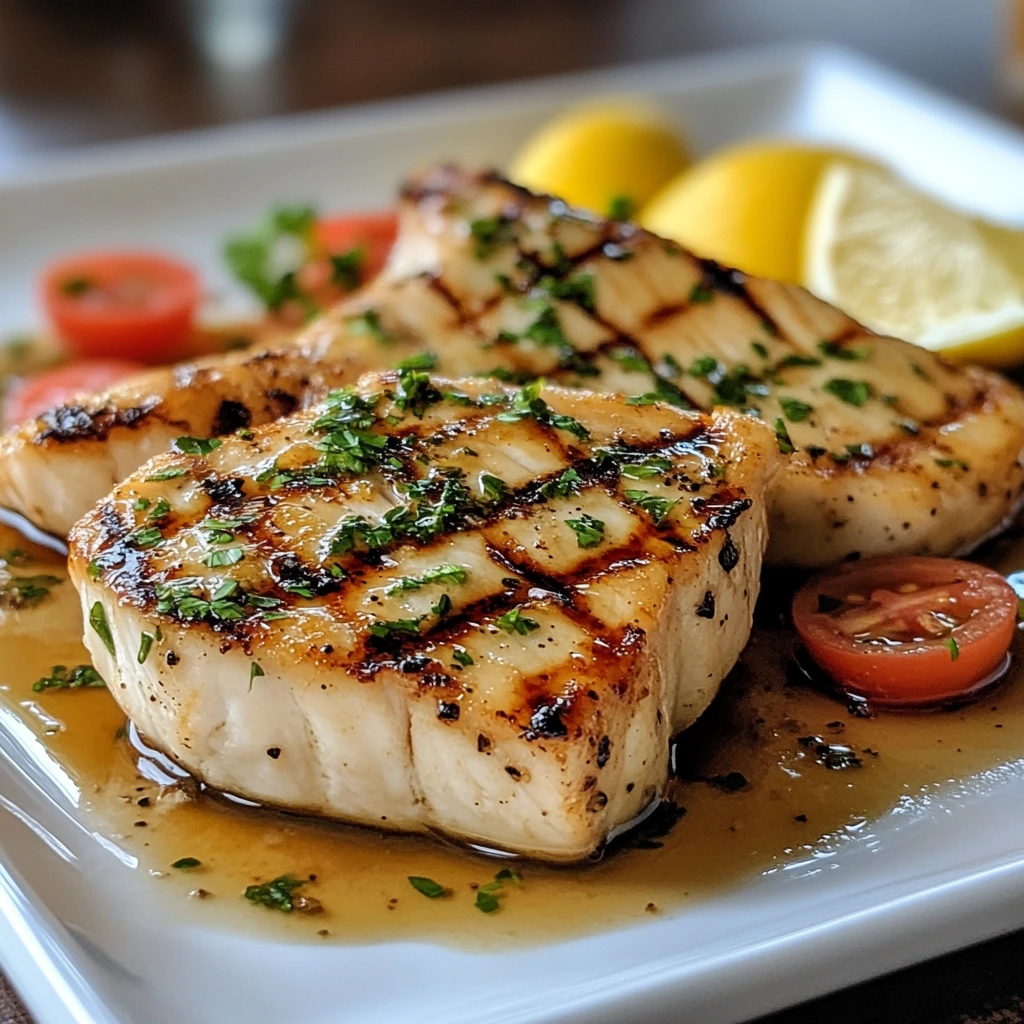Swordfish is meaty like a beef steak yet light, flaky, and rich in omega‑3 oils. That firm texture lets you grill, pan‑sear, or bake it without the fillet falling apart—but only if you avoid the two big culprits of tough swordfish: overcooking and under‑seasoning. The guide below walks you through choosing a thick steak, building a quick citrus‑garlic marinade that both flavors and tenderizes, then cooking it to the ideal internal temperature for a buttery‑soft bite. Total hands‑on time is about 10 minutes, cooking time 8–10 minutes, and the results taste like a splurge‑night entrée from an upscale seafood bistro.
Why Swordfish Steak Can Turn Tough (and How to Stop It)
| Culprit | What Happens | Tender Fix |
|---|---|---|
| Low Fat in Muscle Fibers | Without marbling, heat drives out moisture quickly. | Add surface fat (olive oil) and an acidic marinade to lock moisture in. |
| Dense Protein | Proteins tighten fast above 145 °F / 63 °C. | Pull steaks at 135 – 140 °F, rest 5 min; carry‑over rises to safe 145 °F. |
| Thin Cuts | A ½‑inch steak overcooks before browning. | Buy 1–1¼ inch (2.5–3 cm) thick center‑cut steaks. |
Ingredient List (2 Servings)

- 2 swordfish steaks, 1–1¼ inch thick, about 6 oz / 170 g each
- 2 Tbsp (30 ml) extra‑virgin olive oil
- 2 Tbsp (30 ml) fresh lemon juice (about ½ lemon)
- 1 Tbsp soy sauce (adds umami without extra salt)
- 1½ tsp minced garlic (≈ 2 cloves)
- 1 tsp fresh thyme leaves or ½ tsp dried
- ½ tsp smoked paprika
- ¼ tsp black pepper
- Pinch of kosher salt (soy sauce already supplies some sodium)
- Optional garnish: lemon wedges, chopped parsley
Pro tip: Citrus + soy’s glutamates break down surface proteins enough to soften the “crust” while keeping the steak intact.
Equipment
- Shallow glass dish or zip‑top bag for marinating
- Paper towels
- Cast‑iron skillet, grill pan, or outdoor grill
- Instant‑read thermometer
- Fish spatula or wide tongs
Step‑by‑Step Instructions

- Pat Dry & Score
- Blot each steak with paper towels.
- Lightly score the surface in a ½‑inch crisscross (¼‑inch deep). This helps marinade penetration and prevents curling.
- Mix & Marinate (15–30 min)
- Whisk olive oil, lemon juice, soy sauce, garlic, thyme, paprika, and pepper.
- Coat fish, cover, and marinate in the refrigerator no longer than 30 minutes—acid that sits too long starts to “cook” the fish (ceviche effect).
- Preheat & Oil the Cooking Surface
- Skillet: Heat dry cast iron over medium‑high until shimmering hot, then add 1 tsp oil.
- Outdoor Grill: Heat to medium‑high (400 °F / 205 °C) and oil the grates.
- Sear First Side (3–4 min)
- Remove steaks, letting excess marinade drip off. Season lightly with kosher salt.
- Place on the hot surface; don’t move them until you see opaque edges creeping ¼ inch up the sides.
- Flip & Finish (3–4 min)
- Turn gently with a fish spatula.
- Cook until the thickest part reaches 135 – 140 °F / 57–60 °C.
- Rest & Serve
- Transfer to a warm plate, tent loosely with foil, and rest 5 minutes; temperature rises to the safe 145 °F / 63 °C.
- Spoon any resting juices over the steaks, add lemon wedges, and sprinkle parsley.
Flavor Variations
| Style | Swap / Add‑In | Suggested Sides |
|---|---|---|
| Mediterranean | Sub basil & oregano for thyme; finish with diced tomatoes & capers. | Orzo salad, grilled zucchini |
| Cajun Blackened | Replace paprika with 1 Tbsp Cajun spice; cook in butter‑ghee mix. | Dirty rice, coleslaw |
| Asian Sesame‑Ginger | Use lime juice, add 1 tsp grated ginger, finish with toasted sesame seeds. | Jasmine rice, stir‑fried bok choy |
| Herb‑Butter Basted | Skip marinade; sear in oil, then baste with garlic‑herb butter last 2 min. | Roasted potatoes, asparagus |
Nutritional Snapshot (per 6 oz cooked steak)*
- Calories: 320
- Protein: 38 g
- Fat: 16 g (3 g saturated)
- Carbs: 3 g
- Omega‑3s: ~720 mg
- Sodium: 490 mg
*Values vary with steak size and marinade retention.
How to Buy Quality Swordfish
- Color: Look for ivory to light pink flesh with no browning.
- Smell: Clean, oceany aroma—never fishy or sour.
- Moisture: Surface should be moist but not slimy; avoid fillets sitting in liquid.
- Skin & Bloodline: If attached, the skin should be tight; the bloodline (dark area) deep red, not brown.
Storage & Reheating
- Refrigerate cooked steaks up to 2 days in an airtight container.
- Reheat gently: 275 °F / 135 °C oven for 8–10 minutes, or steam 3 minutes. Microwaves dry swordfish quickly—avoid if possible.
- Freeze? Raw steaks freeze well up to 2 months; cooked swordfish loses moisture on thawing, so enjoy fresh.
Troubleshooting FAQ
Q: My swordfish always sticks to the grill—help!
A: Start with a clean, oiled grate and let the fish sear undisturbed; proteins release naturally when browned (≈ 3 min).
Q: Is it safe to eat swordfish slightly pink?
A: Only if the center has reached 145 °F after resting. Color can remain faintly pink even at that temperature.
Q: Can I marinade overnight for stronger flavor?
A: Acidic marinades mush swordfish if left longer than 30 minutes. For deeper flavor, use dry seasoning overnight and add lemon just before cooking.
Serving Ideas to Elevate the Plate
- Bright salsa: Mango‑avocado salsa cuts the fish’s richness.
- Compound butter: Whip softened butter with dill, garlic, and lemon zest; melt a pat on top just before serving.
- Wine pairing: A citrusy Sauvignon Blanc or unoaked Chardonnay echoes the lemon notes and cleanses the palate.
Final Bite
Mastering a tender, juicy swordfish steak comes down to three rules: short acidic marinade, scorching‑hot sear, and a disciplined pull at 135 °F. Follow those steps and each bite will flake effortlessly, drenching your fork in garlicky lemon juices rather than the dry chew you might remember from overcooked attempts. Add your favorite herbs or spice blend, pair with crisp vegetables, and you’ve got a 30‑minute seafood showstopper worthy of your blog’s headline. Enjoy!


4 thoughts on “Swordfish Steak Recipe: How to Make It Tender and Delicious”